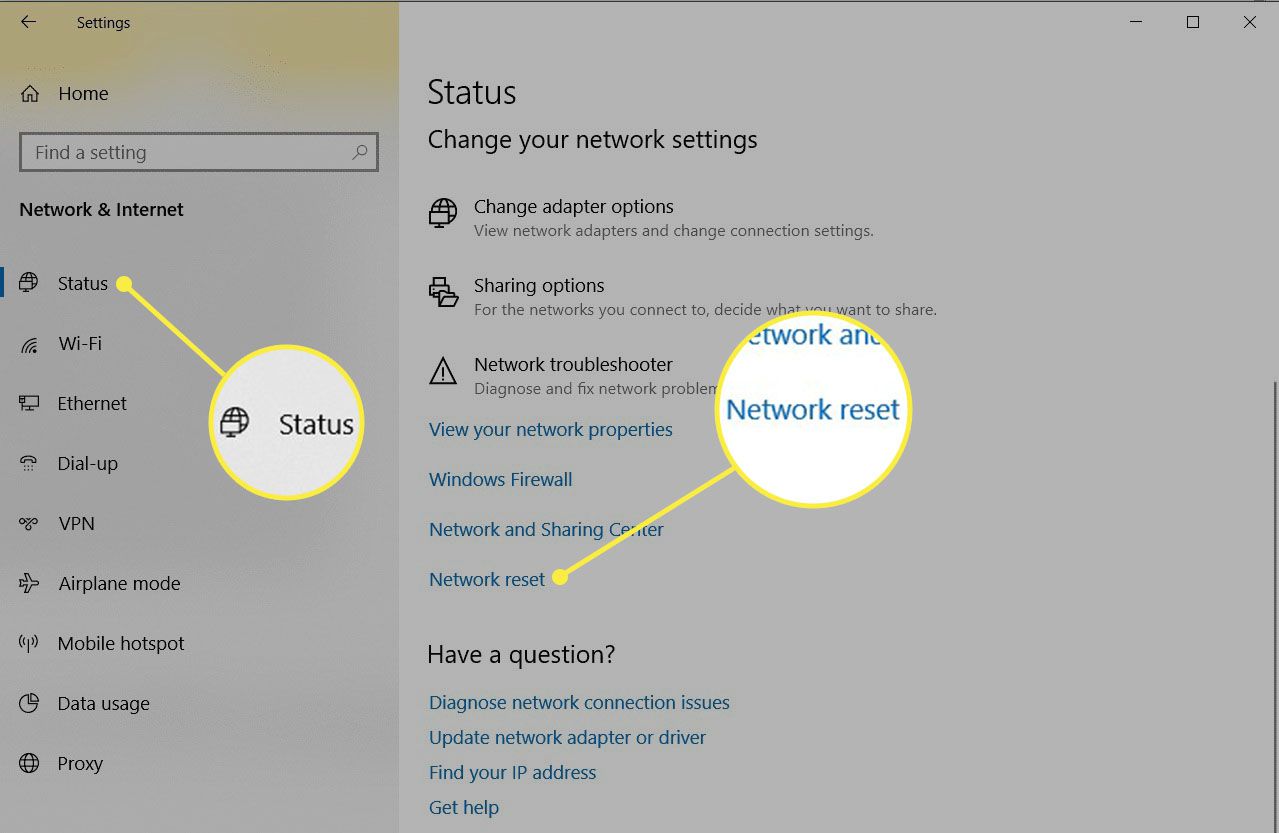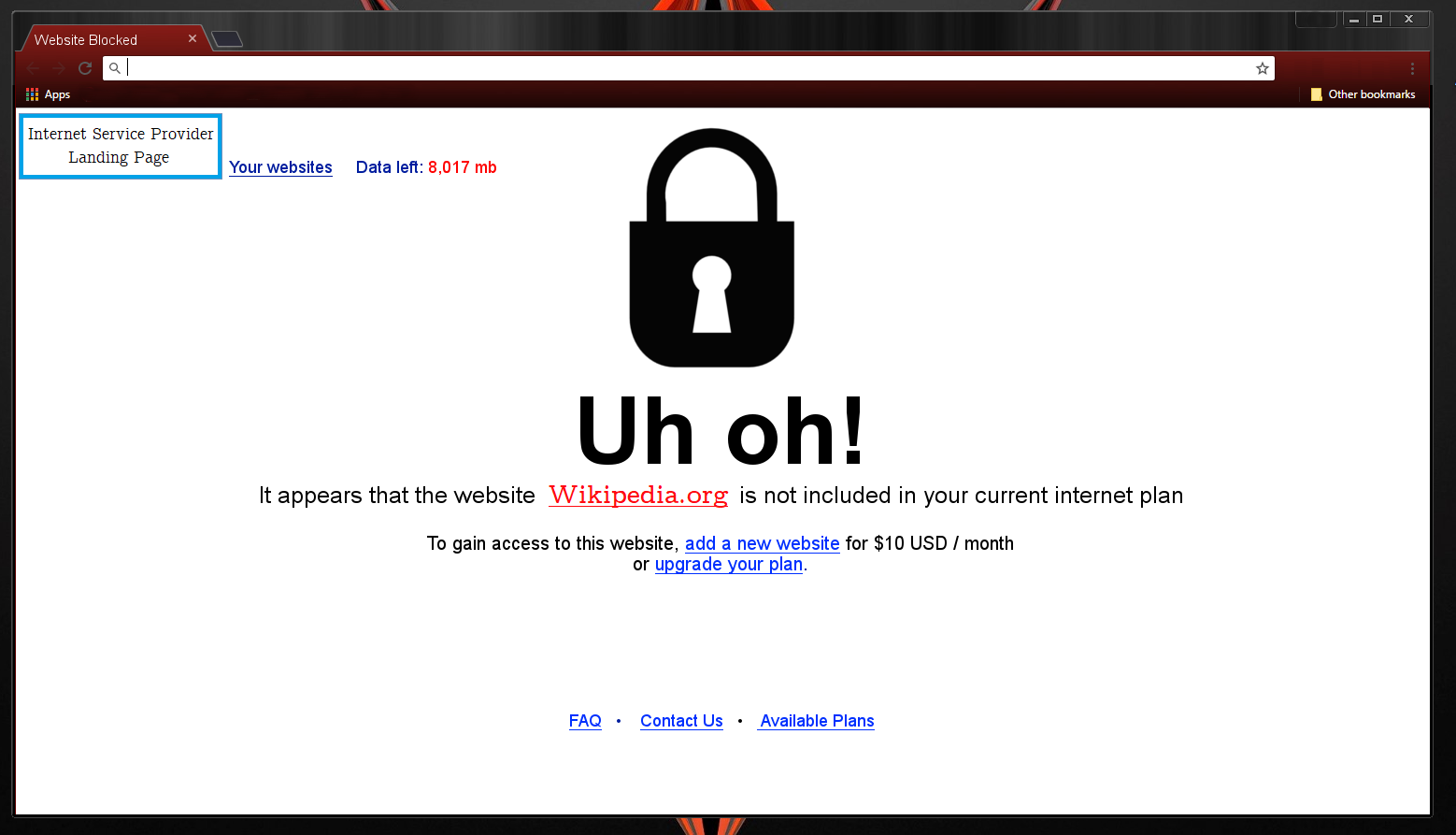Introduction
A proxy server acts as an intermediary between a user’s device and the internet. It can serve various purposes, such as improving security, enhancing performance, or enforcing content restrictions. While proxy servers are commonly used in organizations and schools to control and monitor internet access, there are situations where users may need to bypass them in order to access certain websites or services.
Bypassing a proxy server allows users to establish a direct connection to the internet, bypassing any restrictions or filters put in place by the proxy. This can be useful for accessing blocked websites, using specific applications or services that are blocked by the proxy, or maintaining privacy and anonymity online.
In this article, we will explore several methods to bypass a proxy server effectively. Whether you are facing restricted internet access at your workplace or school, or you simply want to overcome geographic restrictions and access content from different regions, these methods will help you regain control over your internet browsing.
It is important to note that bypassing a proxy server may violate the policies or terms of service set by the organization or institution that manages the network. Therefore, it is recommended to use these methods responsibly and within the boundaries of the law.
What is a Proxy Server?
A proxy server acts as a gateway between a user’s device and the internet. It receives user requests, forwards them to the appropriate servers, and then relays the responses back to the user. The primary function of a proxy server is to provide various benefits, such as improved security, enhanced performance, and content filtering.
When a user requests a website or any other online content, the request is first sent to the proxy server. The proxy server then makes a separate request on behalf of the user to the intended destination. It acts as an intermediary, hiding the user’s IP address and other identifying information from the destination server.
Proxy servers can be used in various environments, including corporate networks, schools, and public Wi-Fi networks. Within organizations, proxy servers help control and monitor internet usage, enforce content filtering policies, and enhance security by scanning web traffic for malicious content or potential threats.
There are different types of proxy servers, each with its own unique functionality:
- Forward Proxy: Also known as an outgoing proxy, a forward proxy server handles requests from local clients (such as devices within a network) and sends them to the internet. This type of proxy server is commonly used in organizations to control and filter internet access.
- Reverse Proxy: A reverse proxy server sits between the internet and a web server, intercepting client requests and forwarding them to the appropriate backend servers. It helps distribute incoming traffic, improve performance, and provide additional security features.
- Transparent Proxy: A transparent proxy server operates without the knowledge of the user. It intercepts and handles network traffic automatically, without requiring any configuration on the user’s device.
- Anonymous Proxy: An anonymous proxy server hides the user’s IP address and provides a level of anonymity while browsing the internet. It helps users bypass geographical restrictions and access blocked websites.
By understanding what a proxy server is and how it functions, we can explore methods to bypass it for specific needs. Whether you want to access restricted content or maintain your online privacy, the following methods will assist you in bypassing a proxy server effectively.
Why Would You Want to Bypass a Proxy Server?
There are several reasons why you might want to bypass a proxy server. Proxy servers, while serving important purposes like enhancing security and improving network performance, can sometimes impose restrictions that limit users’ access to certain websites or services. By bypassing a proxy server, you can overcome these limitations and enjoy the following benefits:
Access Blocked Websites: Organizations and institutions often use proxy servers to restrict access to certain websites or categories of content. However, there may be instances where you need to access a blocked website for work or personal reasons. By bypassing the proxy server, you can regain access to these websites and browse freely.
Use Applications and Services: Some applications and services may be blocked by the proxy server, preventing you from utilizing them. Whether it’s a messaging app, online gaming platform, or video streaming service, bypassing the proxy server allows you to use these applications and services without limitations.
Overcome Geographic Restrictions: Proxy servers can also be used to enforce geographical restrictions, preventing users from accessing content that is limited to specific regions. By bypassing the proxy server, you can change your virtual location and access geo-blocked content, such as streaming services or region-specific websites.
Maintain Privacy and Anonymity: Proxy servers can log user activities and monitor internet traffic. If privacy is a concern, bypassing the proxy server can help you maintain your confidentiality and anonymity while browsing the internet.
Improved Performance: While proxy servers are designed to enhance performance by caching and compressing data, there may be instances where bypassing the proxy can lead to improved connection speeds, especially if the proxy server is overloaded or experiencing network issues.
Troubleshooting Connectivity Issues: In some cases, connectivity issues may arise due to the proxy server configuration or compatibility with certain applications. Bypassing the proxy server can help troubleshoot and isolate connectivity problems, allowing you to identify and resolve issues more effectively.
By understanding the reasons why you might want to bypass a proxy server, you can explore various methods to achieve this. Next, we will delve into different techniques and technologies that can help you bypass a proxy server and regain control over your internet browsing.
Methods to Bypass a Proxy Server
There are several methods you can employ to bypass a proxy server effectively. These methods allow you to establish a direct connection to the internet, bypassing any restrictions or filters imposed by the proxy. Here are some popular methods:
Method 1: Virtual Private Network (VPN)
A VPN is one of the most common and reliable methods to bypass a proxy server. By encrypting your internet traffic and routing it through a server located outside your network, a VPN can hide your IP address and bypass any proxy restrictions. This allows you to access blocked websites and services securely and anonymously.
Method 2: Web Proxy
Using a web proxy is another effective way to bypass a proxy server. A web proxy acts as an intermediary between your device and the internet, making your requests on your behalf. It fetches the requested content and relays it back to you, bypassing any restrictions imposed by the proxy server. Web proxies can be accessed through any web browser, allowing you to browse the internet anonymously and access blocked websites.
Method 3: Tor
Tor, also known as The Onion Router, is a free and open-source software that allows you to browse the internet anonymously. Tor routes your internet traffic through a network of volunteer-operated servers, encrypting the data at each hop. This makes it difficult for anyone, including proxy servers, to trace your online activities. By using Tor, you can bypass proxy restrictions and access the internet with enhanced privacy.
Method 4: SSH Tunneling
Secure Shell (SSH) tunneling involves creating an encrypted connection between your device and a remote server. By establishing this tunnel, your internet traffic can bypass the proxy server and reach the desired destination securely. SSH tunneling can be set up using SSH clients like PuTTY or by using built-in SSH functionality in operating systems like Linux and macOS.
Method 5: Remote Desktop Connection
If you have access to a remote desktop or a computer located outside your network, you can utilize a remote desktop connection to bypass the proxy server. By connecting to the remote desktop, you can use the internet as if you were physically present at that location, bypassing any restrictions imposed by the proxy server.
Method 6: Proxy Software
Proxy software, like ProxyCap or Proxy Switcher, can help you bypass a proxy server by redirecting your internet traffic through a different network interface. This allows you to bypass proxy restrictions and access blocked websites or services directly.
When choosing a method to bypass a proxy server, consider factors such as security, ease of use, and compatibility with your devices and network. Remember to use these methods responsibly and within the boundaries of the law and any applicable policies set by your organization or institution.
Method 1: Using a Virtual Private Network (VPN)
Using a Virtual Private Network (VPN) is one of the most effective methods to bypass a proxy server and access blocked content. A VPN creates a secure and encrypted connection between your device and a remote server located outside of your network. By routing your internet traffic through this server, a VPN masks your IP address and allows you to bypass any restrictions imposed by the proxy server. Here’s how to use a VPN to bypass a proxy server:
Step 1: Choose a Reliable VPN
Start by selecting a reputable VPN service provider. Look for a VPN that offers strong encryption, a wide network of servers, and good customer support. Consider factors such as server locations, connection speed, and compatibility with your devices to ensure a seamless browsing experience.
Step 2: Download and Install the VPN Software
Once you have chosen a VPN, download and install the VPN software on your device. Most VPN providers offer applications for various operating systems, including Windows, macOS, iOS, and Android. Follow the instructions provided by the VPN provider to set up the software on your device.
Step 3: Connect to a VPN Server
After installing the VPN software, launch the application and log in with your VPN credentials. Choose a server location from the available options provided by the VPN provider. Select a server located outside your network to bypass the proxy server effectively.
Step 4: Establish a Secure Connection
Once you have selected a server location, click on the “Connect” button to establish a secure connection to the VPN server. The VPN software will encrypt your internet traffic and reroute it through the remote server, bypassing the proxy server’s restrictions. Your IP address will be replaced with the IP address of the VPN server, enhancing your privacy and enabling access to blocked content.
Step 5: Access Blocked Content
With the VPN connection established, you can now access blocked websites and services. Your internet traffic is encrypted, preventing the proxy server from monitoring or blocking your online activities. Enjoy unrestricted browsing and utilize applications or services that were previously inaccessible due to proxy restrictions.
A VPN not only bypasses proxy restrictions but also offers additional benefits, such as enhancing your online privacy and security. It encrypts your internet traffic, protecting it from potential threats and unauthorized access. When choosing a VPN provider, consider their privacy policy, encryption protocols, and logging practices to ensure maximum security and a trustworthy service.
Method 2: Using a Web Proxy
Another effective method to bypass a proxy server is by using a web proxy. A web proxy acts as an intermediary between your device and the internet, allowing you to access blocked websites and bypass proxy restrictions. Here’s how to use a web proxy:
Step 1: Find a Reliable Web Proxy
Start by finding a reputable web proxy service. There are numerous web proxies available online, but it is important to choose a reliable and trustworthy one. Look for a web proxy that offers HTTPS encryption, does not log user activity, and has a good uptime. Websites like ProxySite, HideMyAss, and KProxy are popular options.
Step 2: Enter Website URL
Once you have selected a web proxy, visit the proxy website in your browser. On the web proxy’s homepage, you will typically find a text field where you can enter the URL of the website you want to access. Enter the URL of the blocked website and click on the “Go” or “Enter” button.
Step 3: Access Blocked Content
The web proxy will fetch the requested website on your behalf and display it in your browser. By using the web proxy, your internet traffic bypasses the proxy server’s restrictions, allowing you to access blocked content. You can browse the website and use its features, just like you would if the proxy was not in place.
Optional: Adjust Proxy Settings
Some web proxies allow you to adjust additional settings, such as enabling cookies or JavaScript support. Check the options provided on the proxy website to customize your browsing experience according to your preferences.
Note: Limitations of Web Proxies
While using a web proxy is a convenient way to bypass a proxy server, there are a few limitations to keep in mind. Web proxies may not support all websites and services, especially those that require complex functionalities or use non-standard protocols. Additionally, web proxies may introduce some latency in your browsing experience, as your requests have to go through the proxy server before reaching the destination website. Finally, some organizations or institutions may block access to known proxy websites, rendering this method ineffective. In such cases, you may need to explore alternative methods, such as using a VPN or other proxy software.
Nevertheless, web proxies can be a useful tool to bypass proxy restrictions and gain access to blocked content. They provide a quick and easy way to overcome limitations imposed by proxy servers, allowing you to browse the internet freely and enjoy content that would otherwise be inaccessible.
Method 3: Using Tor
Tor, short for The Onion Router, is a free and open-source software that allows you to browse the internet anonymously and bypass proxy server restrictions. Tor routes your internet traffic through a network of volunteer-operated servers, encrypting and bouncing it off multiple relays, making it difficult for anyone to trace your online activities. Here’s how to use Tor to bypass a proxy server:
Step 1: Download and Install Tor
Start by downloading the Tor browser from the official Tor Project website. The Tor browser bundle includes everything you need to connect to the Tor network and browse the internet securely. It is available for Windows, macOS, Linux, and Android.
Step 2: Launch the Tor Browser
After installing the Tor browser, launch the application. The Tor browser’s interface is similar to other web browsers, making it easy to navigate and use.
Step 3: Connect to the Tor Network
When you launch the Tor browser, it will automatically connect to the Tor network. This process might take a few seconds as the browser establishes a secure connection through the Tor relays. Once connected, the Tor browser will open with a modified version of Firefox.
Step 4: Bypass Proxy Restrictions
With the Tor browser connected to the Tor network, you can easily bypass proxy restrictions. Simply enter the URL of the blocked website or desired content in the address bar and press Enter. The Tor browser will route your traffic through the Tor network, effectively bypassing any proxy server restrictions and allowing you to access the blocked content.
Step 5: Maintain Anonymity and Privacy
While using Tor, keep in mind that it provides anonymity and privacy by masking your IP address and encrypting your traffic, but it does not guarantee complete security. Avoid providing personal information or logging into accounts that can be tied back to your identity. Always exercise caution and use additional security measures when browsing the internet.
Using Tor is a powerful method to bypass proxy server restrictions and browse the internet anonymously. It allows you to access blocked websites and content while maintaining your privacy and protecting your online activities from prying eyes.
Method 4: Using SSH Tunneling
SSH tunneling is a technique that allows you to create an encrypted connection between your device and a remote server, bypassing a proxy server. By establishing this secure tunnel, your internet traffic can bypass the proxy server’s restrictions and reach the desired destination. Here’s how to use SSH tunneling to bypass a proxy server:
Step 1: Set Up an SSH Server
Start by setting up an SSH server or having access to one. This can be a server that you own or a remote server provided by a third party. Ensure that SSH access is enabled on the server and that you have the necessary credentials to connect.
Step 2: Initiate the SSH Tunnel
On your device, open the terminal or command prompt and type the following command to initiate the SSH tunnel:
ssh -N -L 8080:destination_website:80 user@ssh_server
Replace “destination_website” with the website you want to access, such as “example.com”. Modify the port numbers if necessary (8080 is the local port, and 80 is the destination port).
Step 3: Enter SSH Server Credentials
You will be prompted to enter the username and password (or SSH key passphrase) for your SSH server. Enter the credentials and press Enter to continue.
Step 4: Access the Blocked Content
Once the SSH tunnel is established, you can open a web browser and navigate to “http://localhost:8080”. The web traffic will be forwarded through the SSH tunnel to the destination website, bypassing the proxy server’s restrictions. You should be able to access the blocked content as if the proxy server was not in place.
Note: Network Configuration
It’s important to note that the SSH tunneling method requires the ability to make outgoing SSH connections and may be subject to network restrictions or firewalls. Also, keep in mind that the SSH server setup may vary depending on your operating system and network environment. It’s best to consult documentation or seek assistance if you encounter any issues.
SSH tunneling is a powerful technique to bypass proxy server restrictions, providing you with a secure and encrypted connection to access blocked content. It can be particularly useful when you have access to an SSH server and need to access specific websites or services that are blocked by the proxy server.
Method 5: Using Remote Desktop Connection
Using Remote Desktop Connection is another method to bypass a proxy server and access blocked content. If you have access to a remote desktop or computer located outside your network, you can establish a remote desktop connection to access the internet and bypass proxy restrictions. Here’s how to utilize Remote Desktop Connection:
Step 1: Set Up the Remote Desktop
Ensure that the remote desktop or computer you want to connect to is properly set up to allow remote access. Enable Remote Desktop on the remote computer and configure any necessary firewall settings or port forwarding on the network router if required.
Step 2: Obtain Remote Desktop Connection Details
Gather the necessary information required for the Remote Desktop Connection. This typically includes the hostname or IP address of the remote computer and login credentials with administrative privileges for accessing the remote desktop.
Step 3: Launch Remote Desktop Connection Client
On your device, open the Remote Desktop Connection client. This is usually built-in for Windows devices, but there are also third-party applications available for other operating systems. Enter the hostname or IP address of the remote computer you want to connect to.
Step 4: Authenticate and Connect
Enter the login credentials for the remote desktop and click “Connect” or “Login”. If successful, the Remote Desktop Connection client will establish a secure remote desktop session with the remote computer, effectively bypassing the proxy server.
Step 5: Access Blocked Content
Within the remote desktop session, you can launch a web browser and access the internet as if you were physically present at the remote computer’s location. Since the internet traffic is routed through the remote computer, it bypasses any proxy server restrictions, allowing you to access blocked content and websites.
Using Remote Desktop Connection enables you to bypass proxy server restrictions by utilizing a remote computer’s internet access. This method is particularly useful when you have access to a computer that is outside the proxy network and want to access restricted content from that location.
Method 6: Using a Proxy Software
Using proxy software is an effective method to bypass a proxy server and gain access to blocked content. Proxy software allows you to redirect your internet traffic through a different network interface, bypassing the proxy server’s restrictions. Here’s how to use proxy software to bypass a proxy server:
Step 1: Choose a Proxy Software
Start by choosing a reliable and trusted proxy software. There are various options available, such as ProxyCap, Proxifier, or Proxy Switcher. Consider factors like compatibility with your operating system, ease of use, and advanced features when selecting the proxy software.
Step 2: Install and Set Up the Proxy Software
Download and install the chosen proxy software on your device. Once installed, launch the software and configure the proxy settings. Provide the details of the proxy server you want to connect to, including the IP address or hostname and the port number. You may also need to enter authentication credentials if required by the proxy server.
Step 3: Enable the Proxy Software
After configuring the settings, enable the proxy software to begin redirecting your internet traffic through the specified proxy server. The software will intercept your requests and route them through the proxy server, effectively bypassing any restrictions imposed by the proxy server you want to bypass.
Step 4: Access Blocked Content
With the proxy software enabled, you can now access blocked content and websites. Your internet traffic will be redirected through the proxy server configured in the software, allowing you to bypass the restrictions of the proxy server you want to bypass. You can browse the internet unrestricted and utilize applications or services that were previously inaccessible due to proxy limitations.
Note: Proxy Software Limitations
It’s important to be aware that some organizations or institutions may detect the use of proxy software and consider it a violation of their policies. Proxy software may also introduce additional latency in your internet connection due to the extra hop and processing involved in redirecting your traffic through the proxy server. Additionally, the effectiveness of proxy software may vary depending on the proxy server configuration and network environment.
Using proxy software is a flexible method to bypass a proxy server and access blocked content. It provides you with control over your proxy settings, allowing you to fine-tune your browsing experience and bypass restrictions imposed by proxy servers.
Things to Consider When Bypassing a Proxy Server
While bypassing a proxy server can grant you access to blocked content and provide more freedom in your internet browsing, there are several important factors to consider. It’s crucial to be mindful of these considerations to ensure a smooth and responsible bypassing experience:
1. Legality and Organization Policies: Before bypassing a proxy server, familiarize yourself with the legal and policy implications. Some organizations may have strict policies against bypassing proxy servers, and it may be considered a violation of terms of service or breach of employment agreements. Understand the potential consequences and use these methods responsibly.
2. Security and Privacy: When bypassing a proxy server, be aware that your internet traffic may not be subjected to the same security measures in place by the proxy server. Ensure that you are utilizing secure and trusted methods, such as using VPNs or reputable proxy services, to maintain the privacy and security of your online activities.
3. Performance and Latency: Bypassing a proxy server may introduce additional latency in your internet connection. The extra routing and encryption can cause slower speeds, affecting your browsing experience. Consider these factors when choosing a bypassing method and understand that performance may vary depending on network conditions, the chosen method, and the proxy server configuration.
4. Compatibility and Availability: Not all bypassing methods may be compatible with your device, operating system, or network environment. Ensure that the method you choose is compatible with your devices and accessible in your location. Some methods, such as using specific proxy software or remote desktop connections, may require administrative permissions or access to external servers.
5. Acceptable Use and Terms of Service: When bypassing a proxy server, adhere to acceptable use policies and terms of service set by service providers, content platforms, and websites. Respect any country-specific laws or regulations pertaining to the content you access. Avoid engaging in illegal activities or violating copyright laws when bypassing a proxy server.
6. Network Monitoring and Detection: Understand that some networks actively monitor and detect attempts to bypass proxy servers. Using unconventional or unauthorized bypassing methods may result in repercussions, such as being flagged, restricted, or blocked from accessing the network or specific websites.
7. Updates and Evolving Proxy Server Configurations: Proxy server configurations can change over time, potentially affecting the effectiveness of bypassing methods. Stay informed about updates and changes to proxy server settings and adjust your bypassing techniques accordingly to ensure continued access to blocked content.
By considering these factors, you can bypass proxy servers responsibly, respect organizational policies and legal constraints, and access the content you need while maintaining security, privacy, and a positive browsing experience.
Conclusion
Bypassing a proxy server can be necessary in certain situations where access to blocked content or services is required. The methods outlined in this article provide effective ways to bypass proxy restrictions and regain control over your internet browsing experience.
Using a virtual private network (VPN) allows you to establish an encrypted connection and bypass proxy restrictions, ensuring secure and private access to blocked content. Web proxies offer a quick and easy way to bypass proxy servers by acting as intermediaries between your device and the blocked websites.
Tor provides an anonymous browsing experience by routing your internet traffic through volunteer-operated servers, making it difficult for proxy servers to trace your online activities. SSH tunneling enables you to establish an encrypted connection to a remote server, bypassing the proxy server’s restrictions.
If you have access to a remote desktop outside your network, utilizing a remote desktop connection allows you to bypass proxy restrictions and access the internet from that location. Proxy software redirects your internet traffic through a different network interface, bypassing the proxy server’s limitations.
When bypassing a proxy server, it’s important to consider the legal and policy implications, as well as the security, performance, and compatibility aspects of the chosen method. Adhering to acceptable use policies, respecting terms of service, and being aware of network monitoring and detection measures ensures responsible bypassing practices.
By understanding the methods and considerations outlined in this article, you can navigate the challenges posed by proxy servers and access the content you need while maintaining security, privacy, and a seamless browsing experience.

























